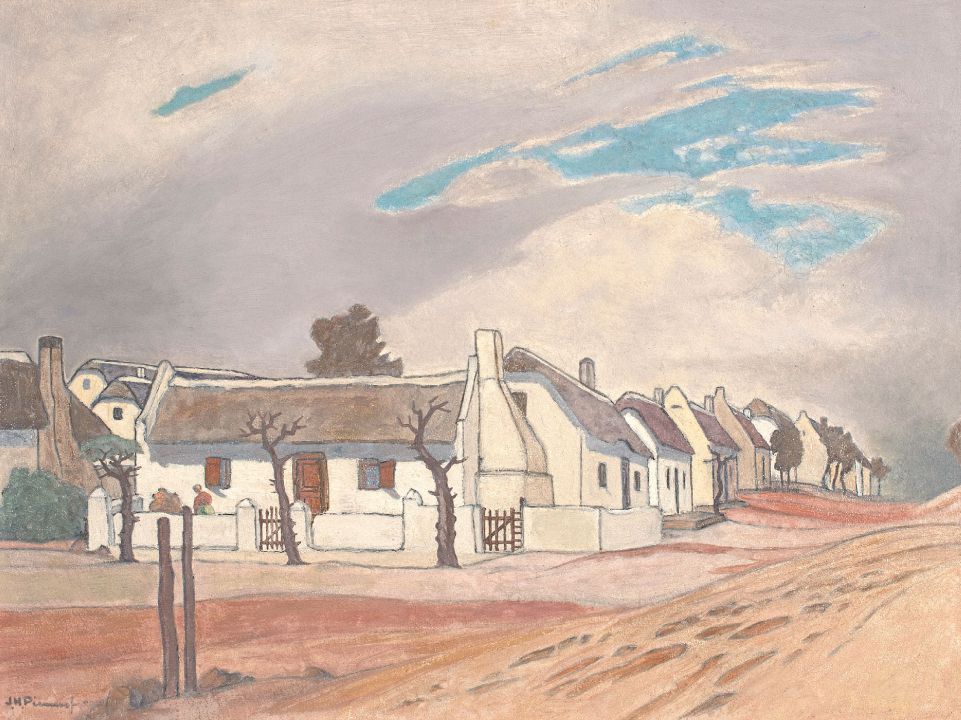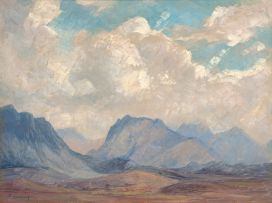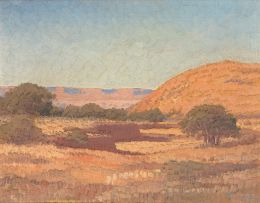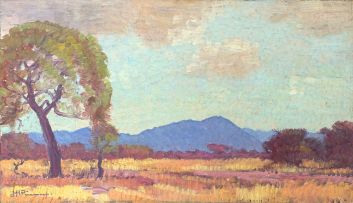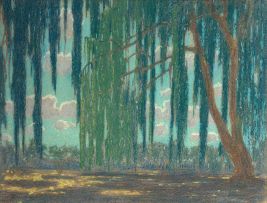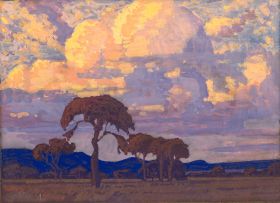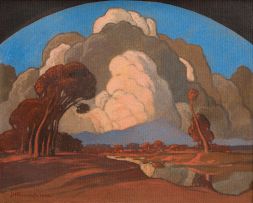Important South African and International Art, Decorative Arts & Jewellery
Live Auction, 16 October 2017
Evening Sale
About this Item
signed and dated 50
Notes
The paint of this serene row of Cape Dutch cottages is so thinly applied that one could easily mistake it for a watercolour study, but Pierneef seems rather to attempt capturing the spirit of this unique little village in the Western Cape. Situated on the Agulhas Plain at the southernmost tip of Africa, Elim was established in 1824 by German missionaries as a Moravian mission station. Reminiscent of the Biblical Elim, a site on which the Israelites set up a camp next to ''twelve wells of water, and threescore and ten palm trees'', this particular area in Agulhas was rich in water and the land suitable for cultivating vines that the missionaries harvested to turn into wine for their Communion services. Apart from preaching the gospel, the missionaries also taught the villagers a variety of trades and skills and Elim's thatchers were renowned for their craftsmanship, as is evident in the immaculate thatched roofs depicted in the present lot. Small wonder that the village became a popular refuge for emancipated slaves after 1834.
Pierneef had always been deeply interested in domestic architecture. In 1944 he gave a lecture on local architecture to the Pretoriase Afrikaanse Kultuurvereniging, claiming that South Africa had no building style of its own and would be able to boast of one only when its architects had succeeded in understanding and interpreting the vastness and never ending quality of the South African landscape. Pierneef's interest in domestic architecture is also evident in many of his paintings of homesteads and farmhouses in the then Transvaal, and often depicting Cape Dutch gables and Georgian houses in the streets of Tulbagh or the grand houses on the wine estates of the Boland, such as Meerlust. His interest in the domestic characteristics of official buildings such as the South African version of neo-classical architecture of the Union Buildings, or a local Art Deco style evident in the Dutch Reformed Church, Louis Trichardt, is also relevant in this regard. Pierneef's father, a builder-architect, encouraged his young son to study technical drawing while the family was in voluntary exile in the Netherlands during the Anglo-Boer war around the turn of the 20th century. This may account for the very strong sense of composition and the linear quality of many, if not all, of Pierneef's paintings.
The row of cottages in Elim may be considered a worthy successor of a previous commission Pierneef received from the Pretoria city council in 1947 to record the styles of the early dwellings in the city, a project Pierneef took much further by including many of the humble matchbox houses in Marabastad, a township just outside Pretoria.
Elim is a picturesque village and has changed little over the years. It is filled with whitewashed cottages and fruit trees. All the roads in the village lead to the iconic thatched roof church in the centre of the town. Curiously, Pierneef omitted the church in this painting, perhaps because, in his view, a spiritual dimension in this area resides elsewhere.
Provenance
Acquired from the artist by the current owner's father.
View all Jacob Hendrik Pierneef lots for sale in this auction
